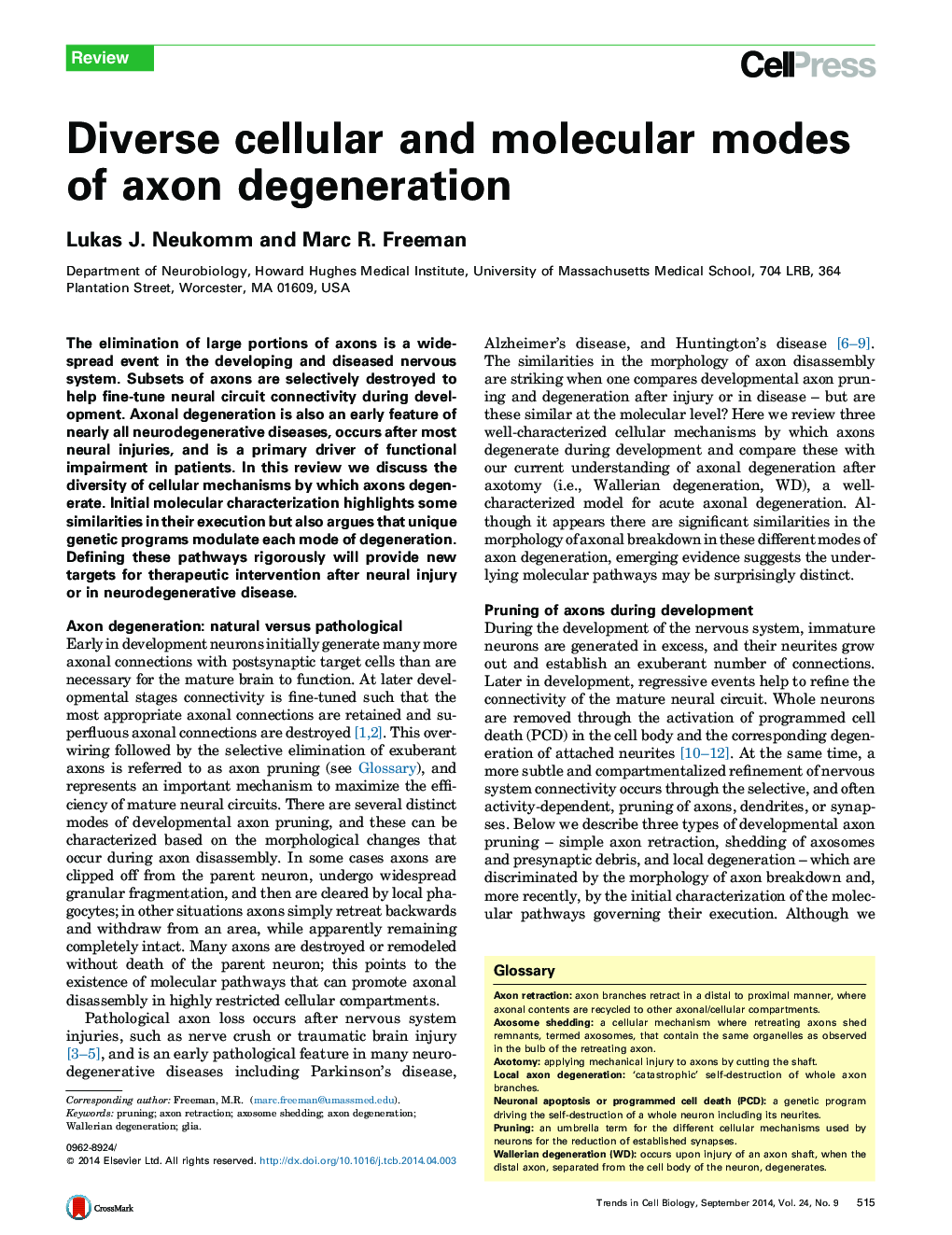| Article ID | Journal | Published Year | Pages | File Type |
|---|---|---|---|---|
| 2204485 | Trends in Cell Biology | 2014 | 9 Pages |
•Developmental axon elimination occurs through three main modes: axon retraction, axosome shedding, and local degeneration of axon branches.•Axotomy results in widespread degeneration (Wallerian degeneration) of the severed portion of the axon.•Several signaling molecules have been identified that drive these four distinct modes of developmental or injury-induced axon loss.•Molecular characterization of the mechanisms of axon degeneration should provide important insights into neurological disease, and potentially new drug targets.
The elimination of large portions of axons is a widespread event in the developing and diseased nervous system. Subsets of axons are selectively destroyed to help fine-tune neural circuit connectivity during development. Axonal degeneration is also an early feature of nearly all neurodegenerative diseases, occurs after most neural injuries, and is a primary driver of functional impairment in patients. In this review we discuss the diversity of cellular mechanisms by which axons degenerate. Initial molecular characterization highlights some similarities in their execution but also argues that unique genetic programs modulate each mode of degeneration. Defining these pathways rigorously will provide new targets for therapeutic intervention after neural injury or in neurodegenerative disease.
